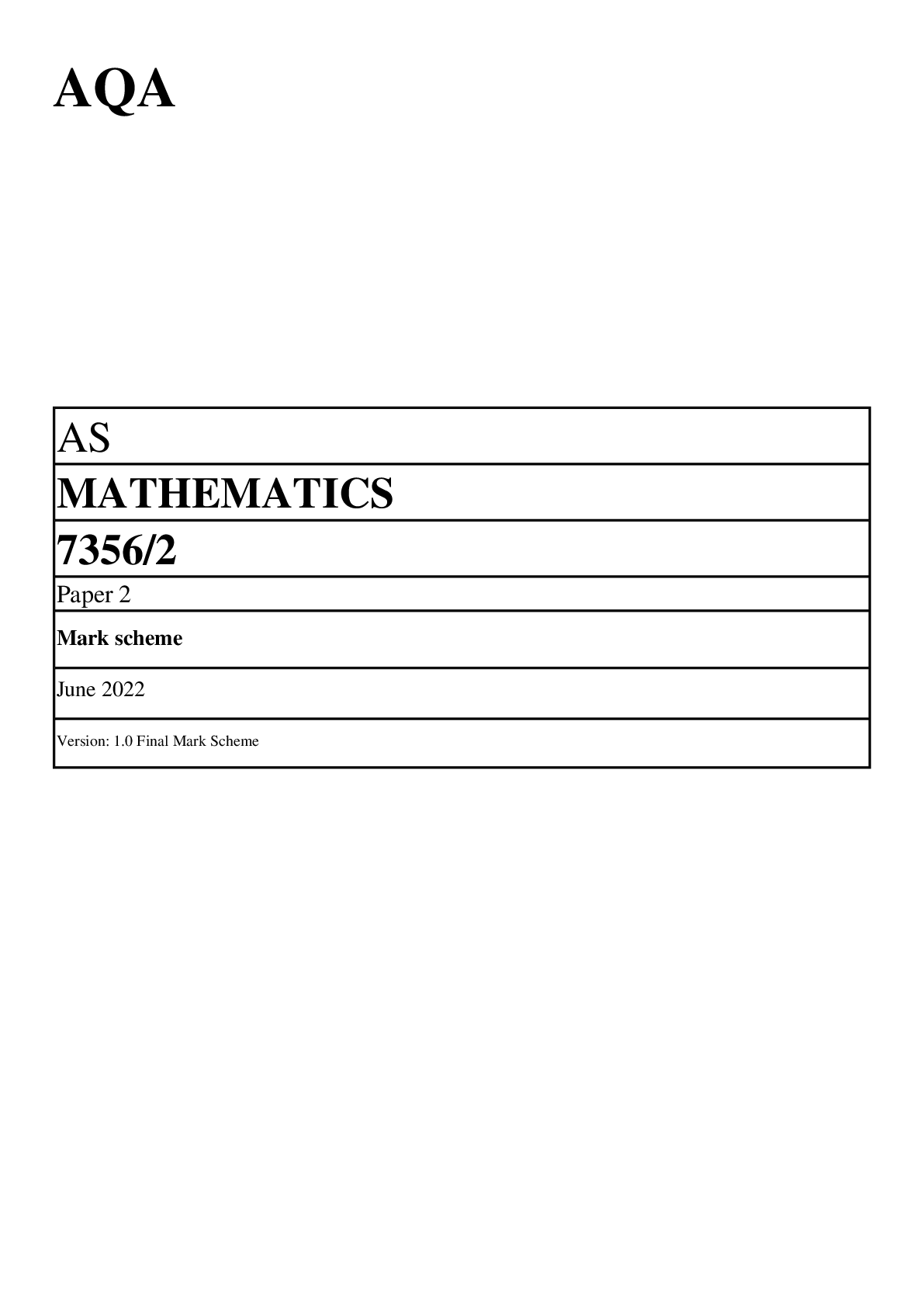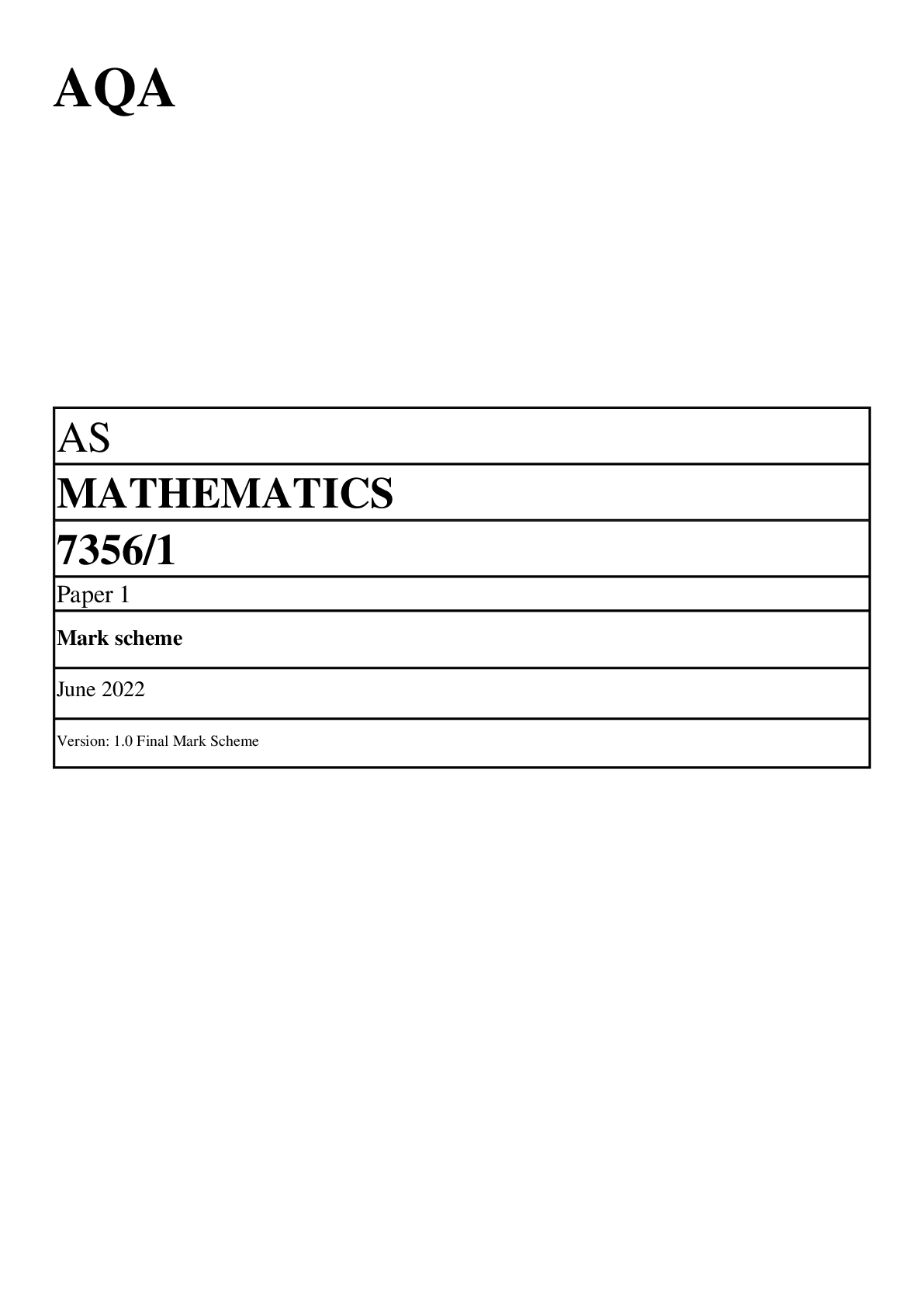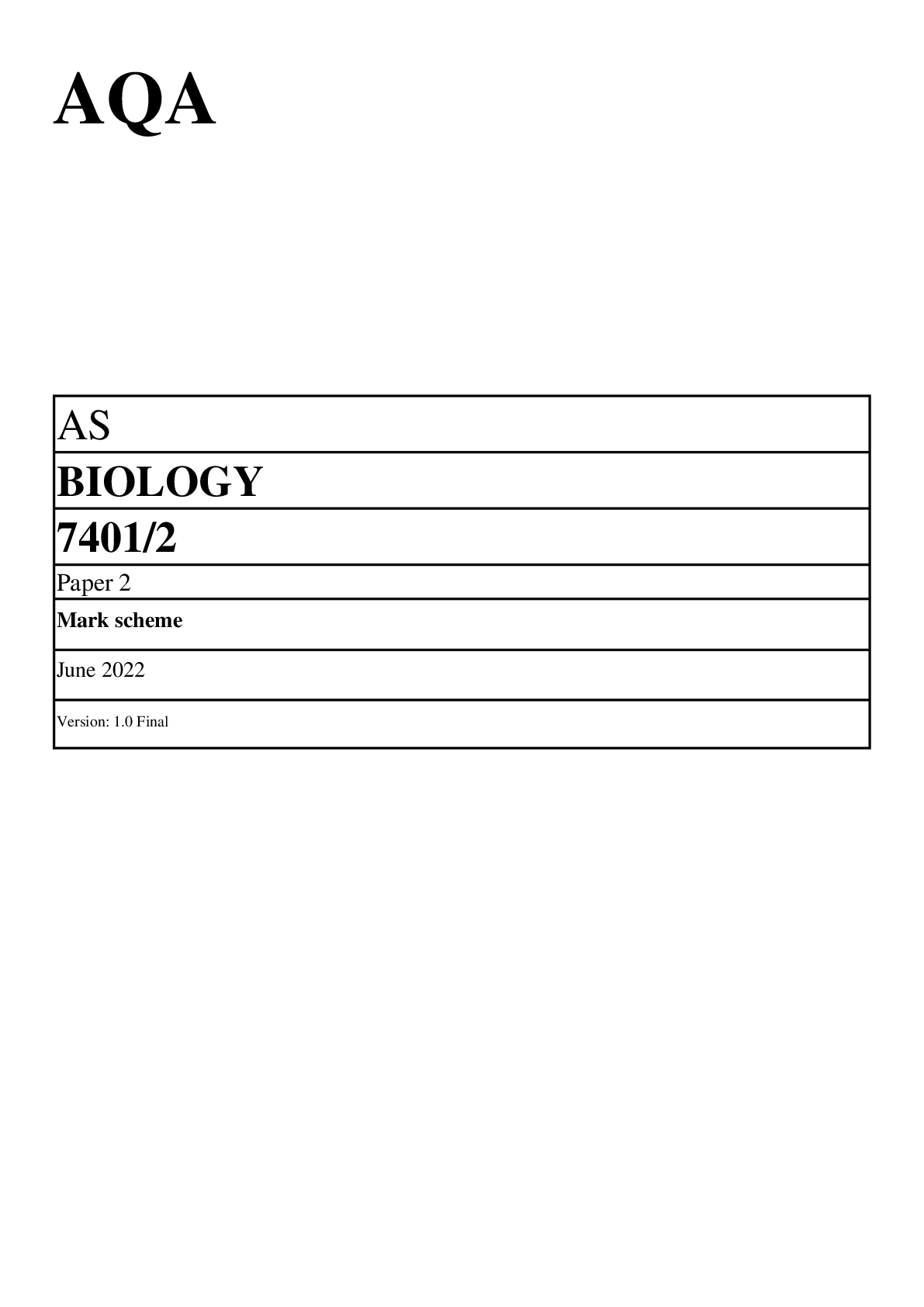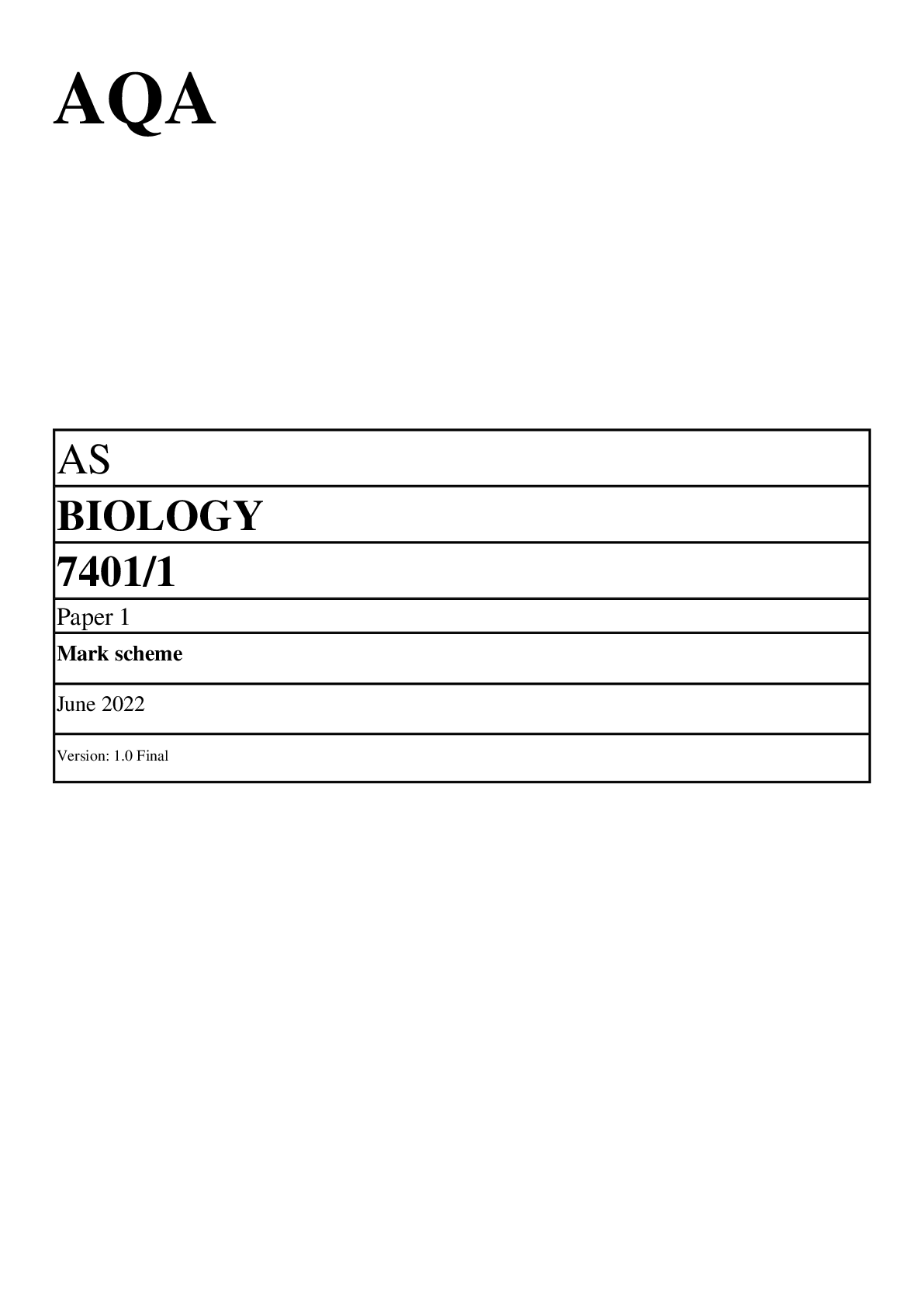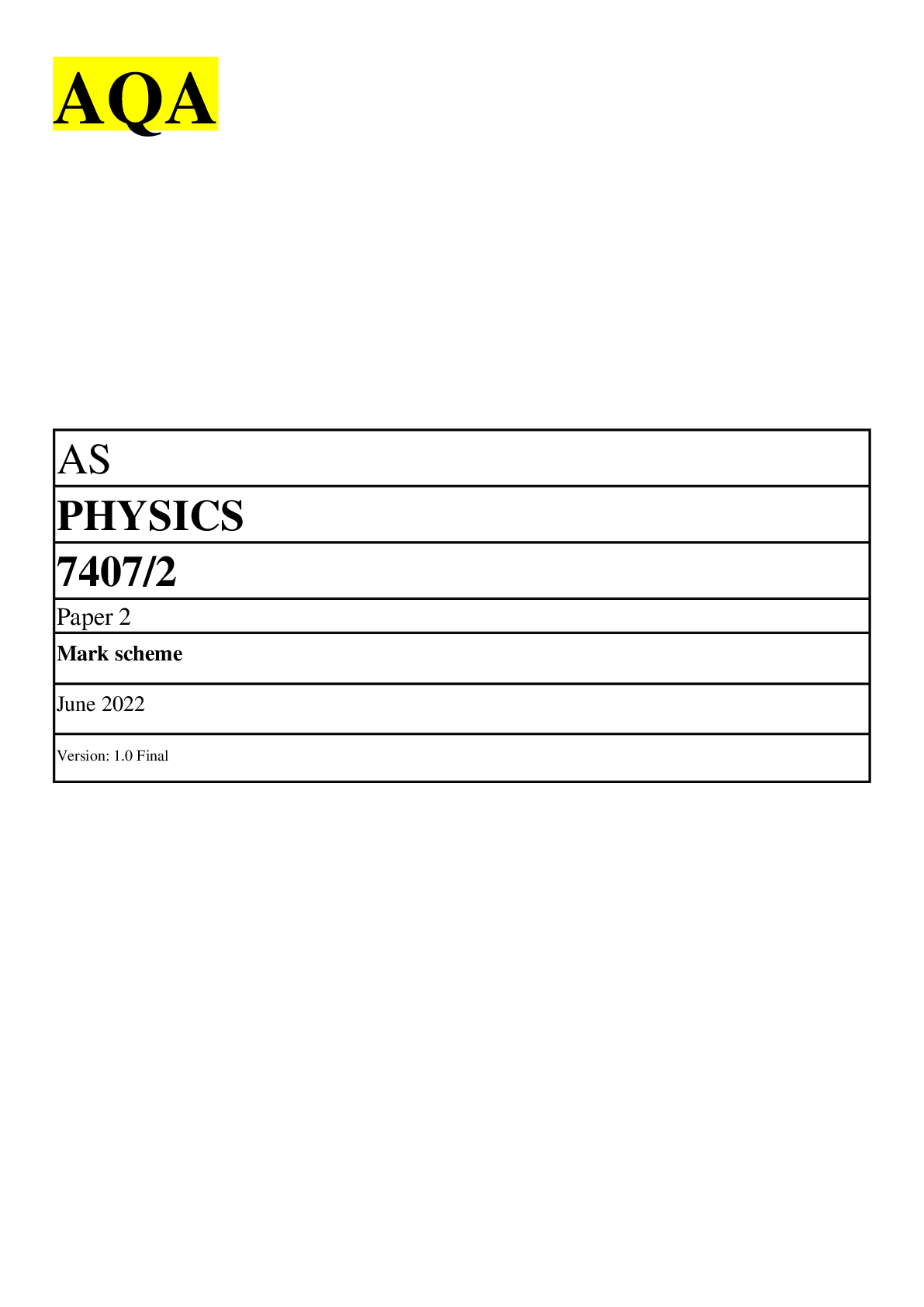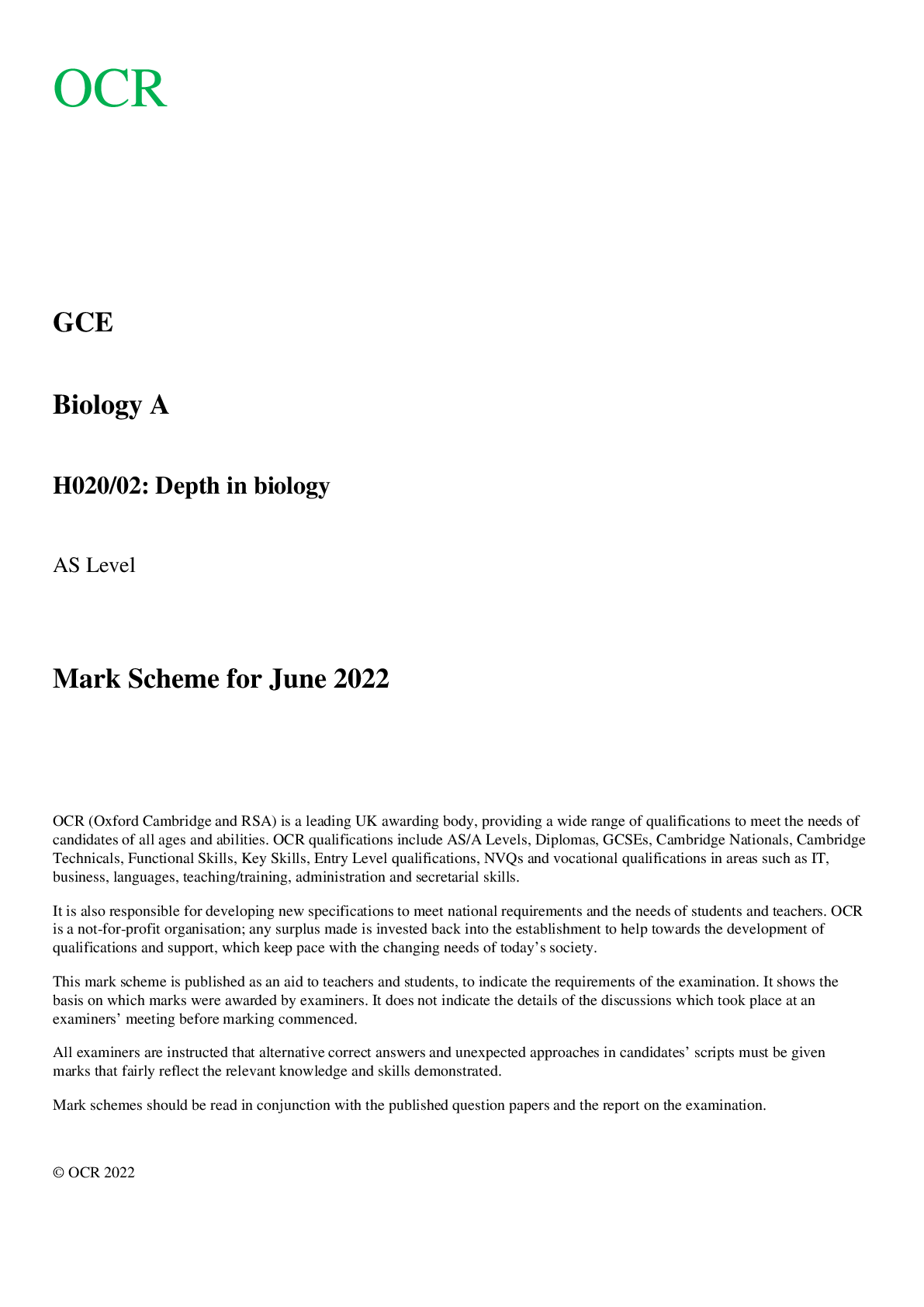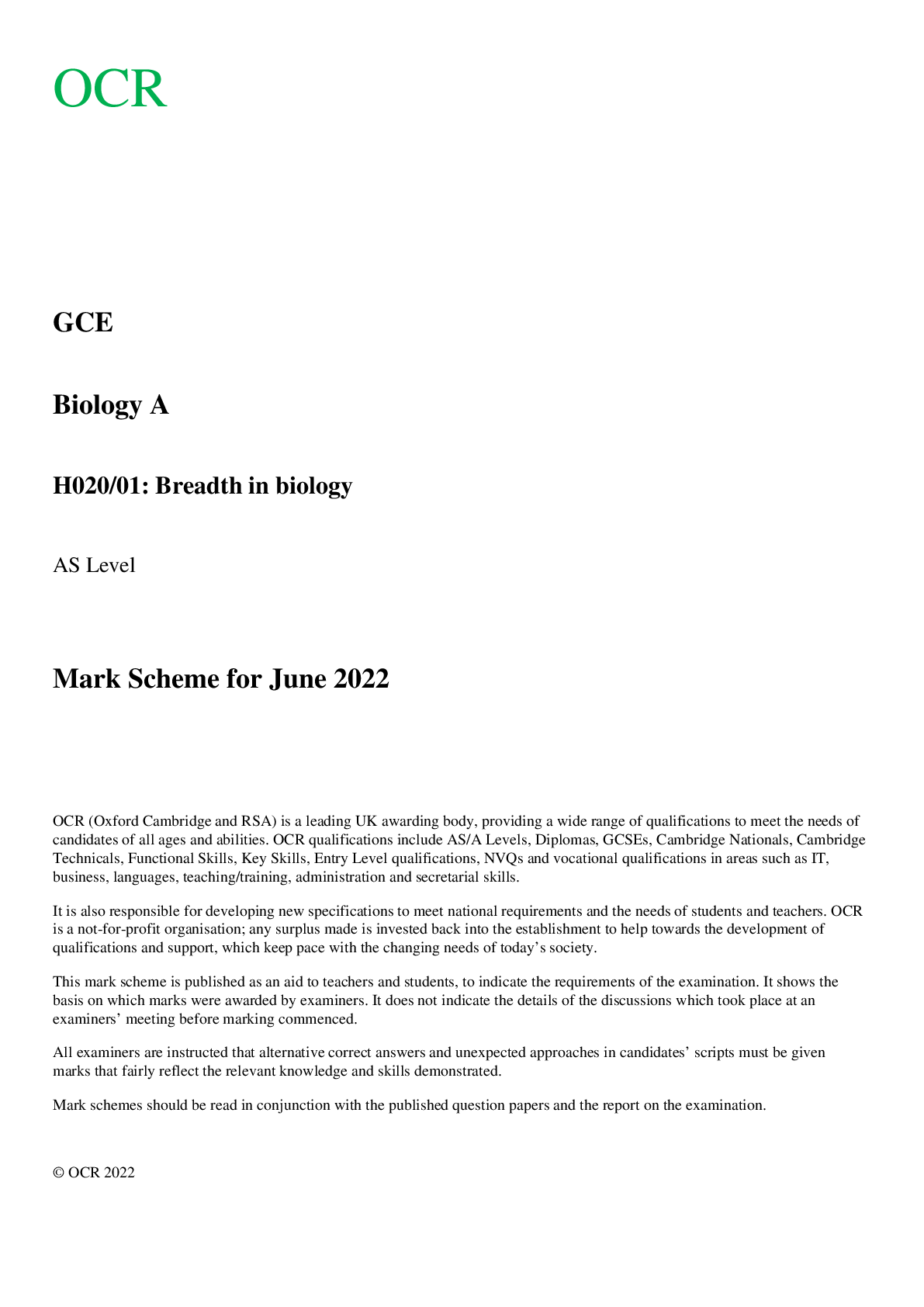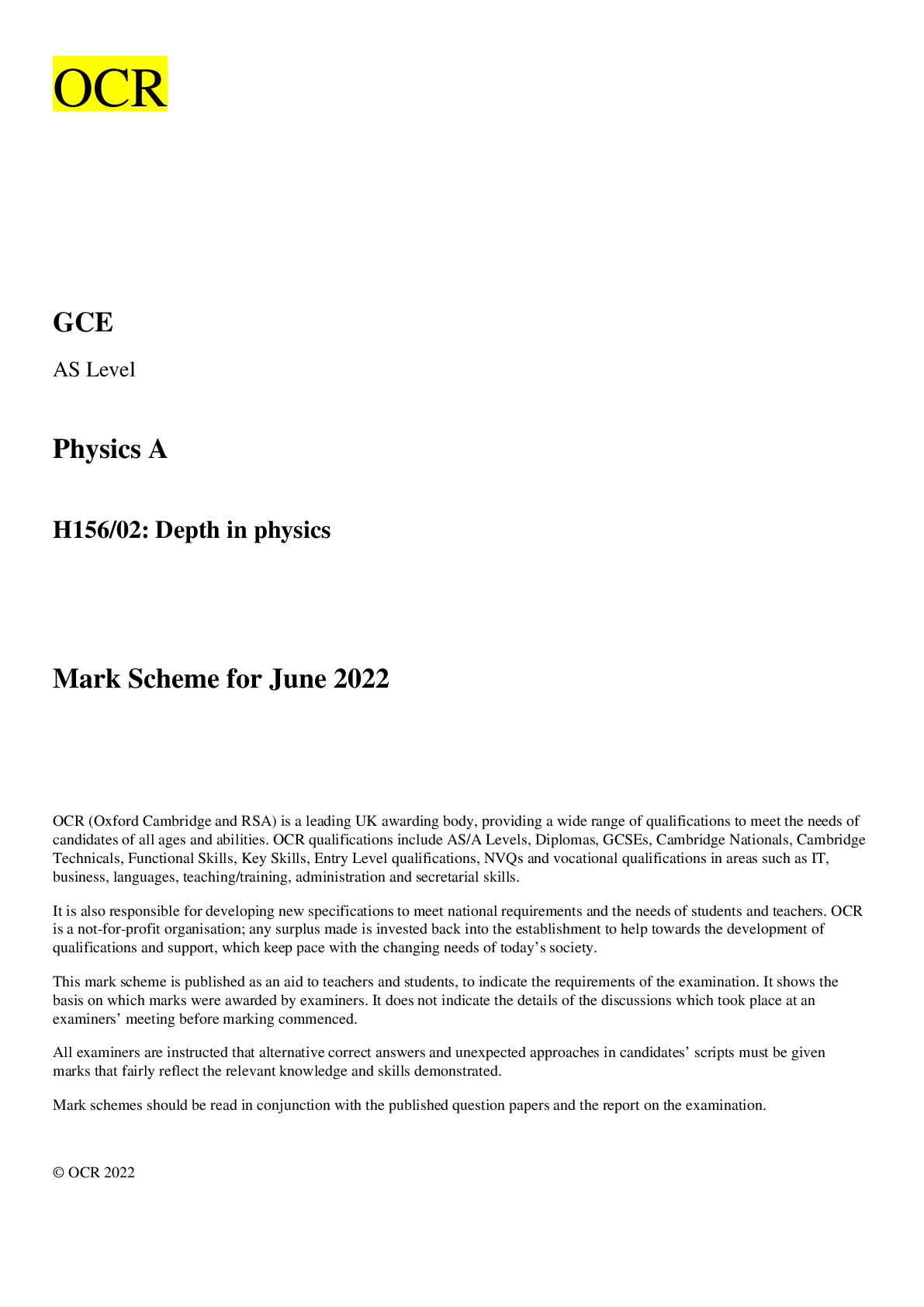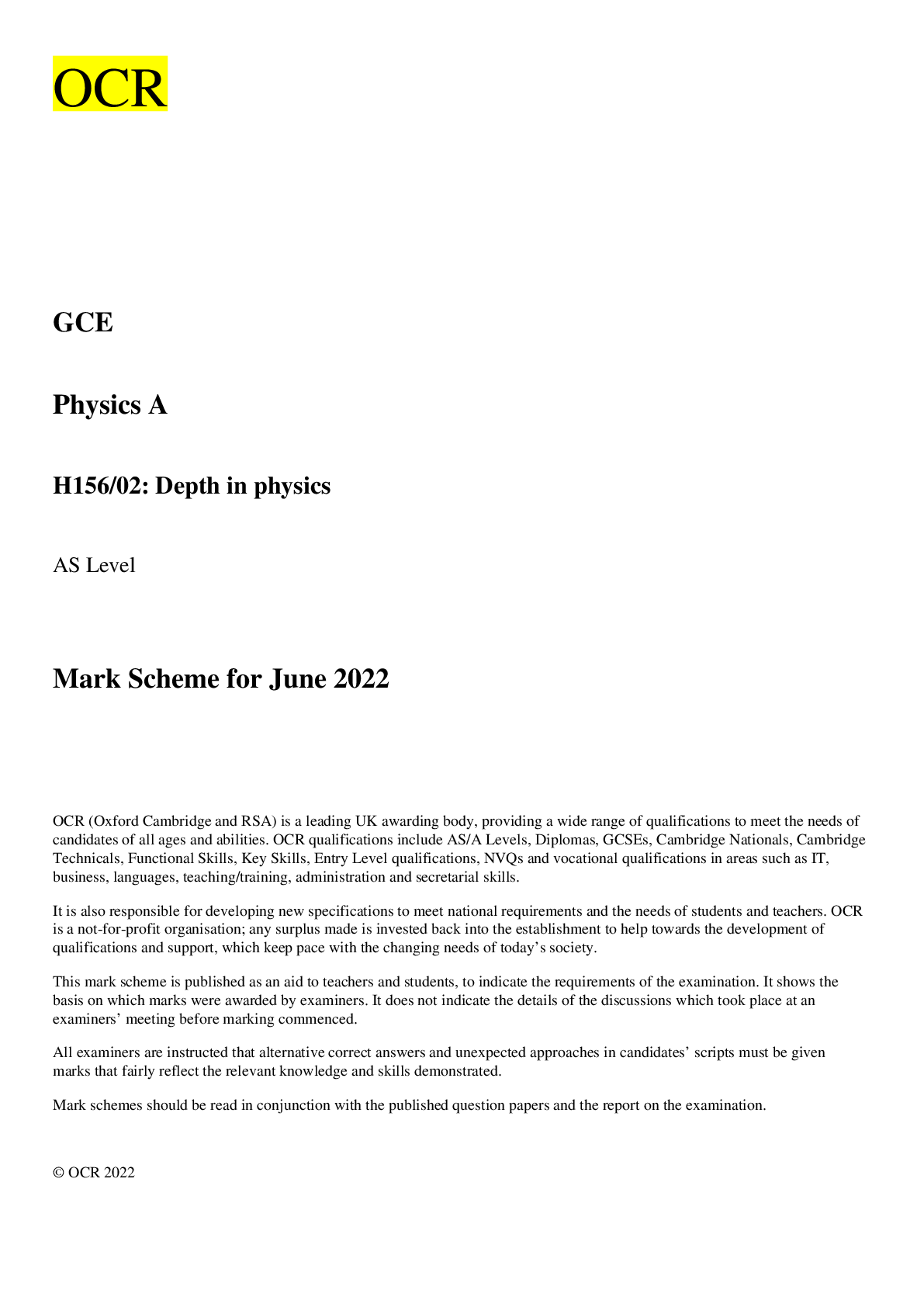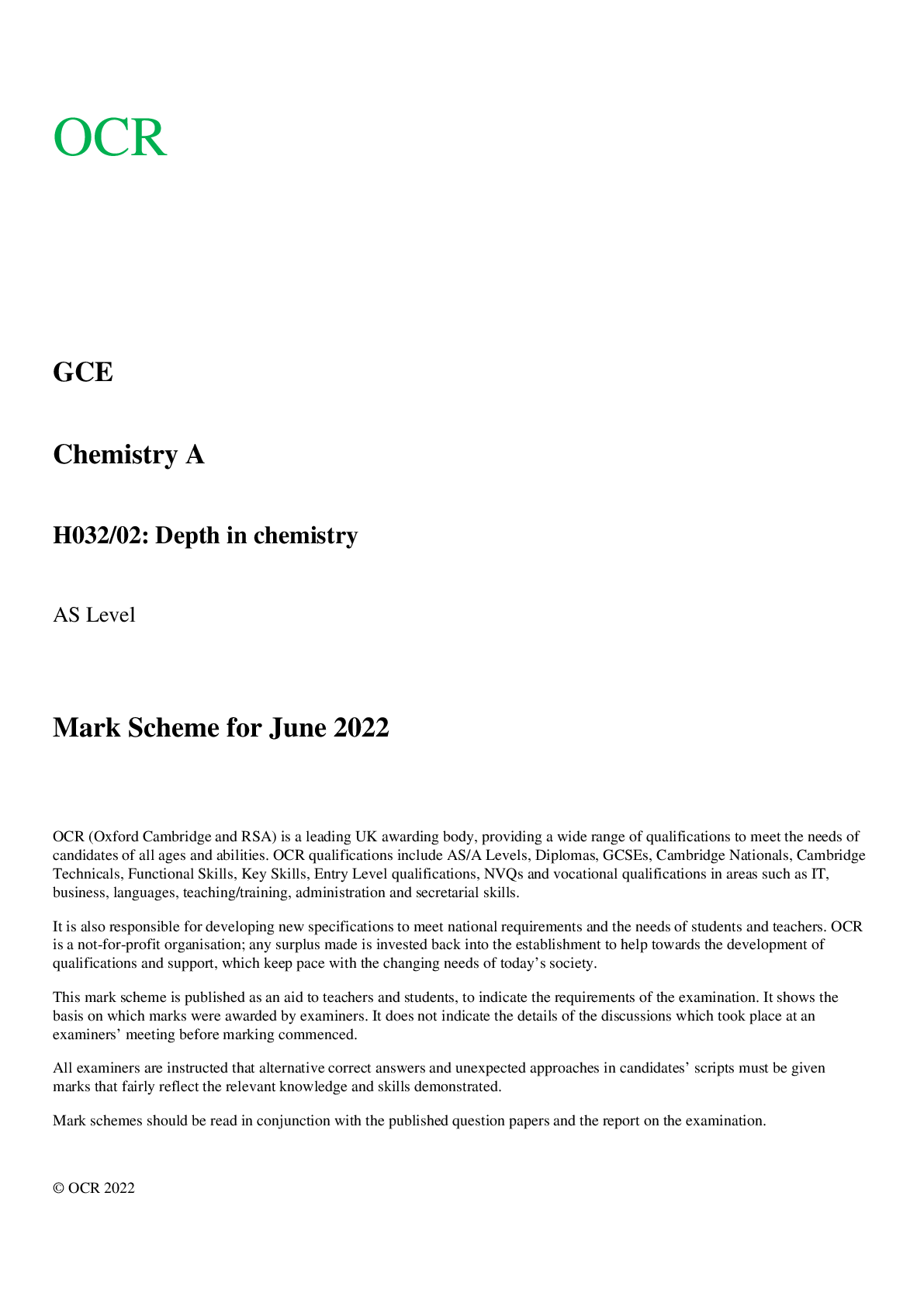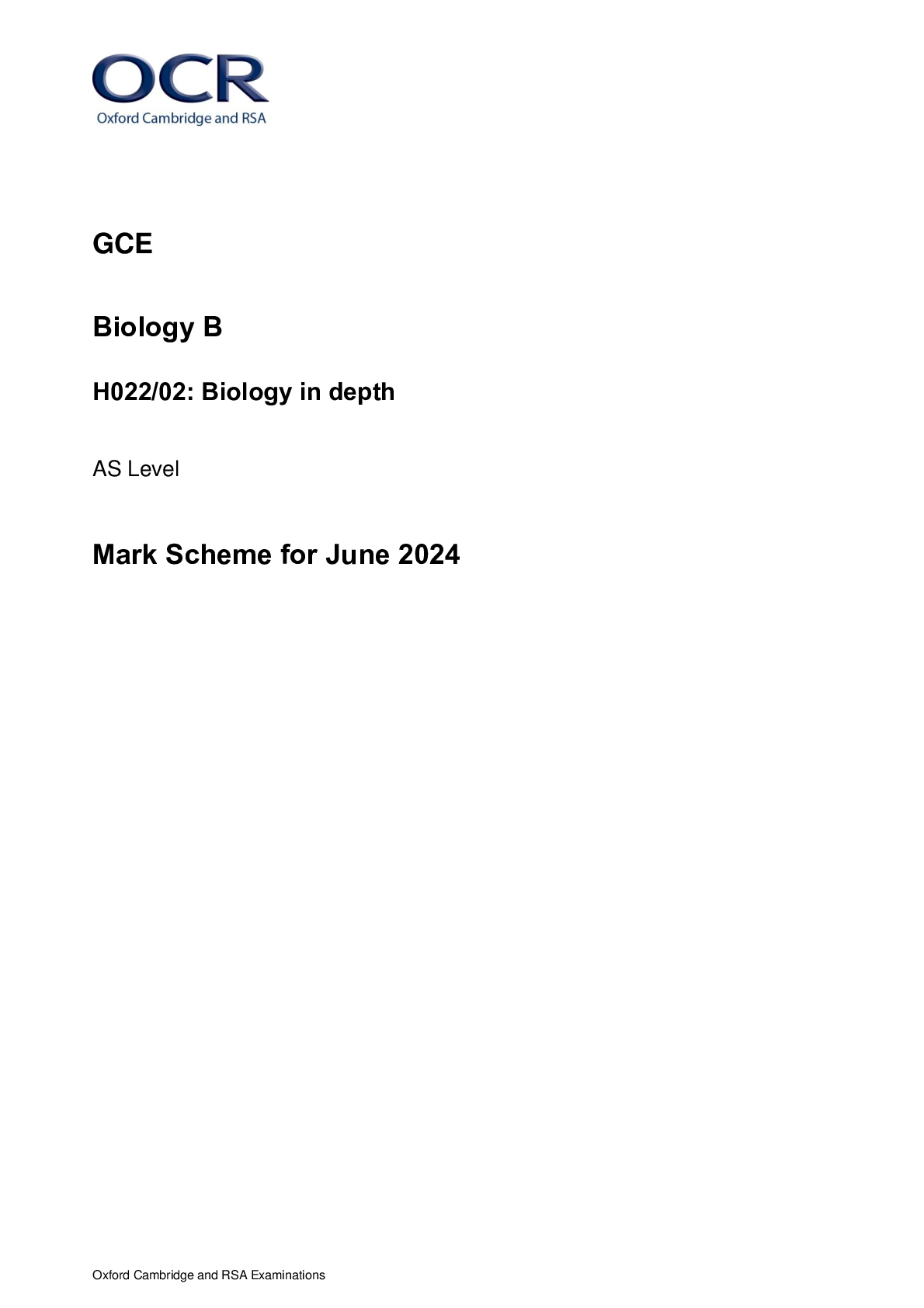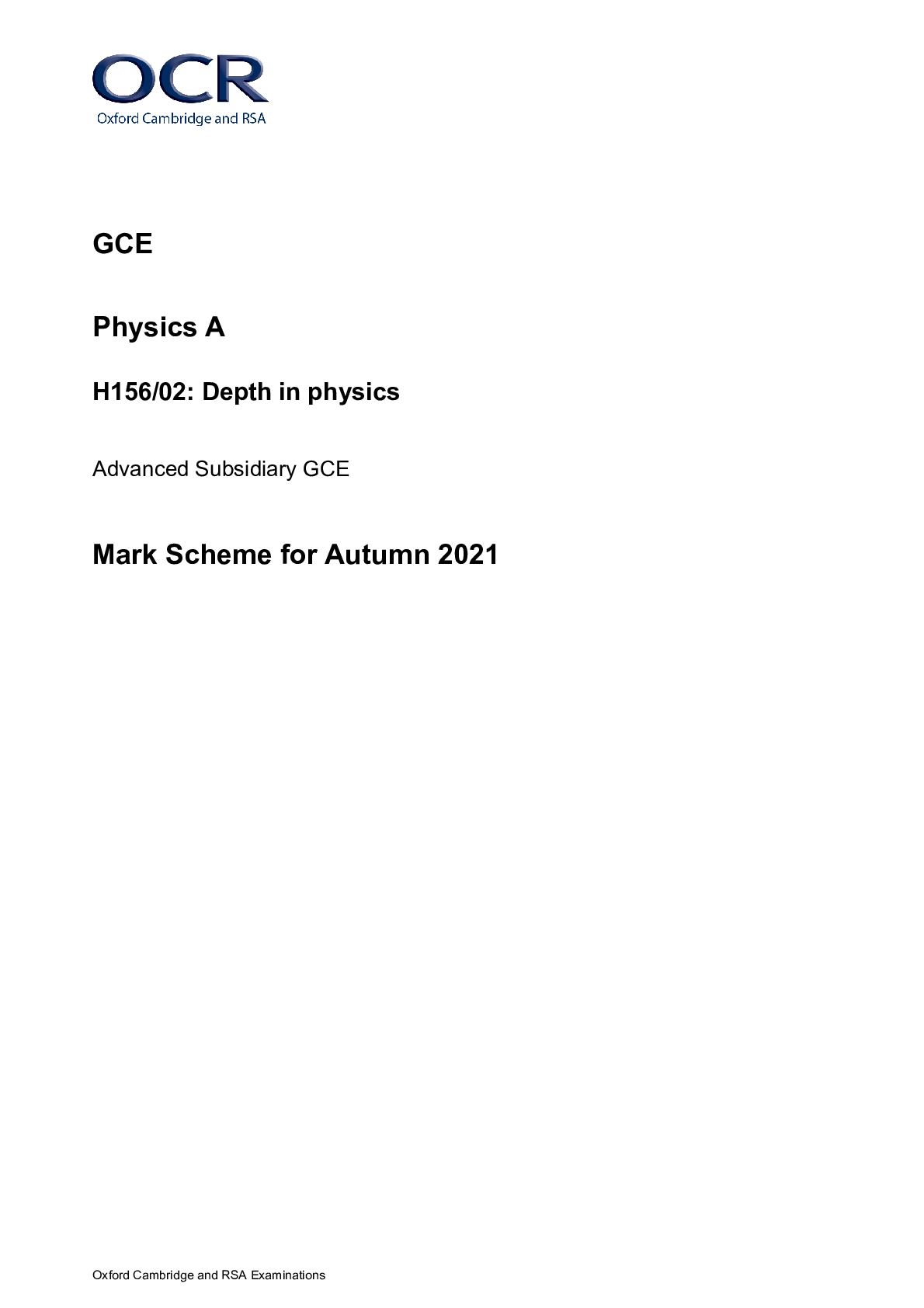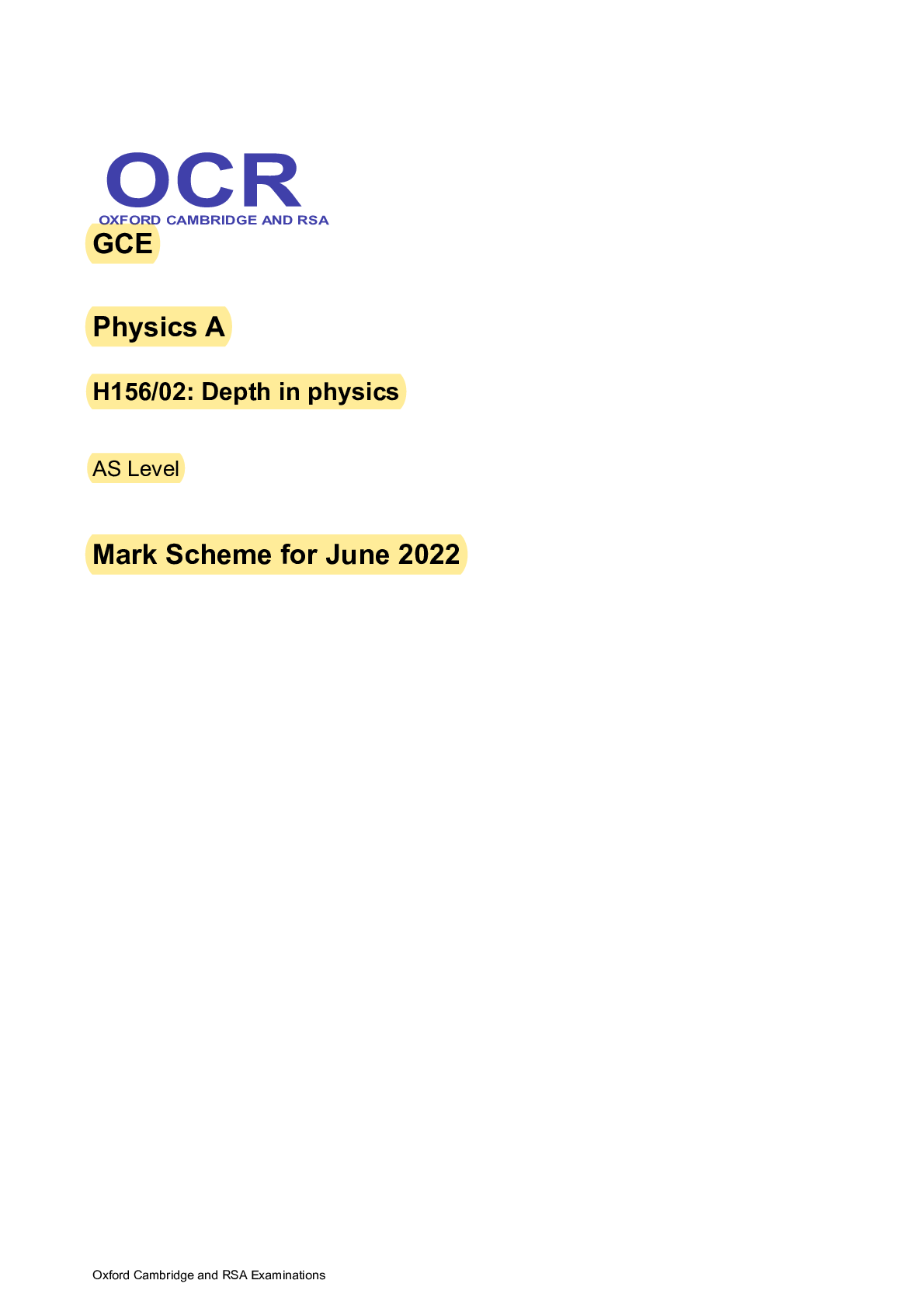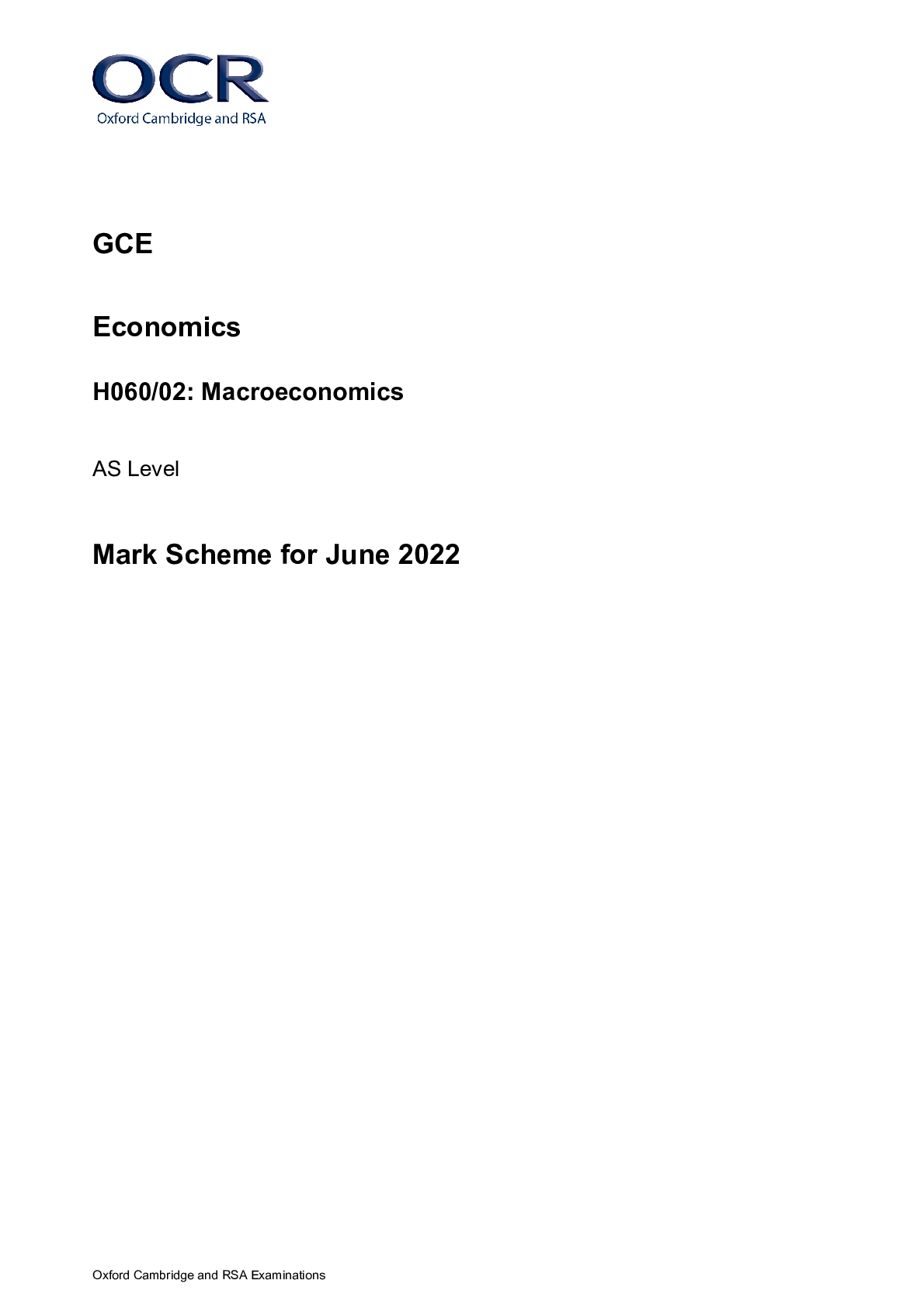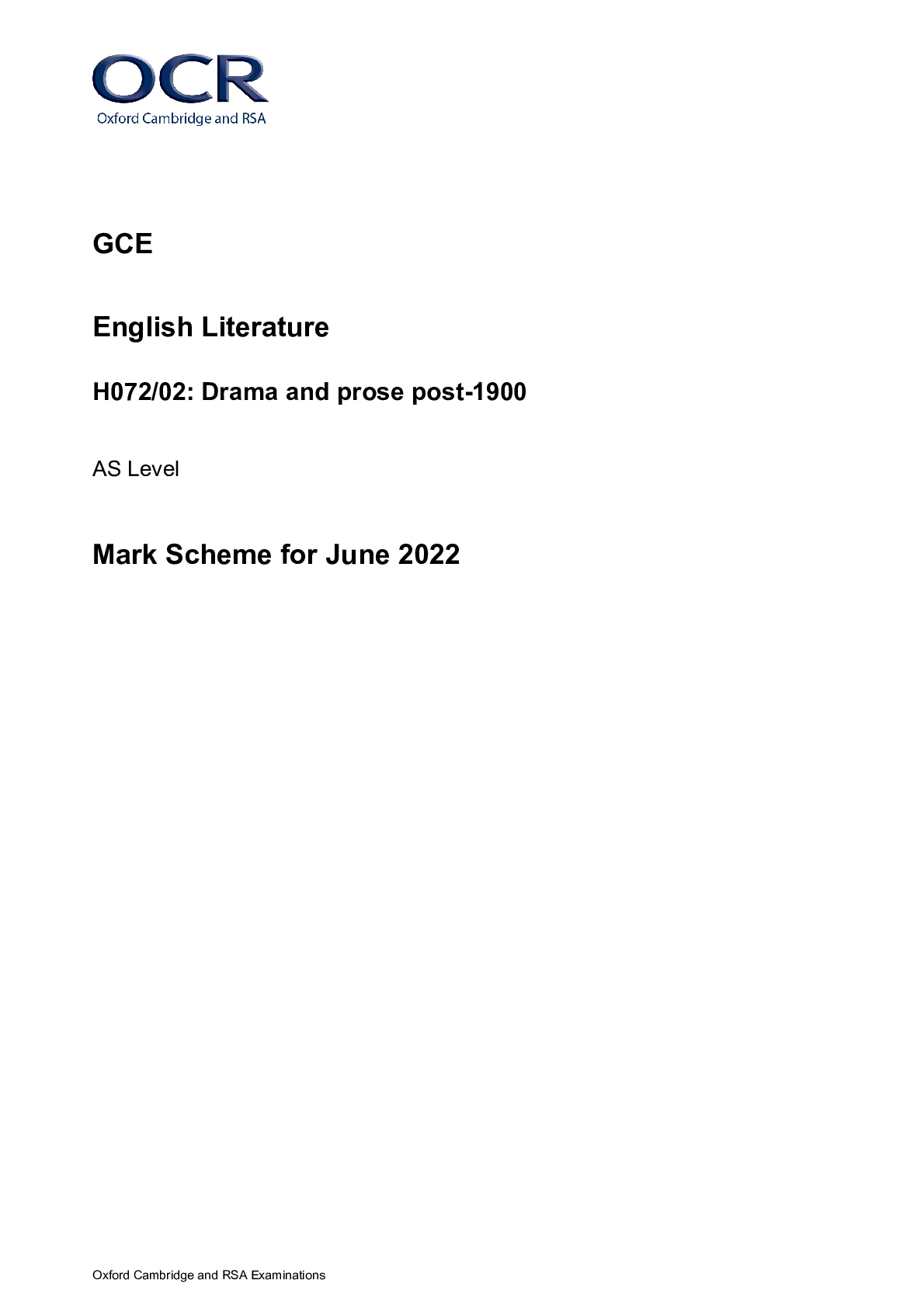AQA > AS Level Mark Scheme > AQA AS LEVEL SOCIOLOGY 7191/2 JUNE 2022 FINAL MARK SCHEME > Research Methods and Topics in Sociology (All)
AQA AS LEVEL SOCIOLOGY 7191/2 JUNE 2022 FINAL MARK SCHEME > Research Methods and Topics in Sociology
Document Content and Description Below
AS SOCIOLOGY 7191/2 Paper 2 Research Methods and Topics in Sociology Mark scheme June 2022 Version: 1.0 Final *226A7191/2/MS* ... Mark schemes are prepared by the Lead Assessment Writer and considered, together with the relevant questions, by a panel of subject teachers. This mark scheme includes any amendments made at the standardisation events which all associates participate in and is the scheme which was used by them in this examination. . Level of response marking instructions Level of response mark schemes are broken down into levels, each of which has a descriptor. The descriptor for the level shows the average performance for the level. There are marks in each level. Before you apply the mark scheme to a student’s answer read through the answer and annotate it (as instructed) to show the qualities that are being looked for. You can then apply the mark scheme. Step 1 Determine a level Start at the lowest level of the mark scheme and use it as a ladder to see whether the answer meets the descriptor for that level. The descriptor for the level indicates the different qualities that might be seen in the student’s answer for that level. If it meets the lowest level then go to the next one and decide if it meets this level, and so on, until you have a match between the level descriptor and the answer. With practice and familiarity you will find that for better answers you will be able to quickly skip through the lower levels of the mark scheme. When assigning a level you should look at the overall quality of the answer and not look to pick holes in small and specific parts of the answer where the student has not performed quite as well as the rest. If the answer covers different aspects of different levels of the mark scheme you should use a best fit approach for defining the level and then use the variability of the response to help decide the mark within the level, ie if the response is predominantly level 3 with a small amount of level 4 material it would be placed in level 3 but be awarded a mark near the top of the level because of the level 4 content. Step 2 Determine a mark Once you have assigned a level you need to decide on the mark. The descriptors on how to allocate marks can help with this. The exemplar materials used during standardisation will help. There will be an answer in the standardising materials which will correspond with each level of the mark scheme. This answer will have been awarded a mark by the Lead Examiner. You can compare the student’s answer with the example to determine if it is the same standard, better or worse than the example. You can then use this to allocate a mark for the answer based on the Lead Examiner’s mark on the example. You may well need to read back through the answer as you apply the mark scheme to clarify points and assure yourself that the level and the mark are appropriate. Indicative content in the mark scheme is provided as a guide for examiners. It is not intended to be exhaustive and you must credit other valid points. Students do not have to cover all of the points mentioned in the Indicative content to reach the highest level of the mark scheme. An answer which contains nothing of relevance to the question must be awarded no marks. Section A Research Methods Qu Marking guidance Total marks 01 Outline two advantages of using structured interviews in sociological research. Two marks for each of two appropriate advantages clearly outlined or one mark for appropriate advantage partially outlined. Answers may include: ● data obtained is reliable (1 mark); because all respondents are asked the same questions in the same way (+1 mark) ● useful for obtaining factual detail (1 mark); because format allows for short standardised questions and answers (+1 mark) ● answers are easier to put into standardised statistical format (1 mark); therefore it is easier to analyse findings (+1 mark) ● less likelihood of interviewer bias (1 mark); because interview questions are pre-set and standardised (+1 mark). Other relevant material should be credited. No marks for no relevant points. 4 02 Evaluate the disadvantages of using personal documents in sociological research. 16 Marks Level descriptors 13−16 Sound, conceptually detailed knowledge of a range of relevant material on some of the disadvantages of using personal documents in sociological research. Good understanding of the question and of the presented material. Appropriate material applied accurately to the issues raised by the question. There will be some reasonable evaluation or analysis. 10−12 Broad or deep, accurate but incomplete knowledge of a range of disadvantages involved in using personal documents in sociological research. Understands a number of significant aspects of the question; reasonable understanding of the presented material. Application of material is largely explicitly relevant to the question, though some material may be inadequately focused. There will be some limited evaluation or analysis, eg the difficulty of identifying the credibility of personal documents. 7−9 Largely accurate knowledge but limited range and depth, eg a basic account of a few disadvantages of using personal documents in sociological research. Understands some aspects of the question; superficial understanding of the presented material. Applying listed material from the general topic area but with limited regard for its relevance to the issues raised by the question, or applying a narrow range of more relevant material. Answers are unlikely to have any evaluation but may have some limited analysis within a largely descriptive account. 4−6 Limited undeveloped knowledge, eg two or three insubstantial points about the disadvantages of personal documents. Understands only very limited aspects of the question; simplistic understanding of the presented material. Limited application of suitable material, and/or material often at a tangent to the demands of the question, eg drifting into examples of personal documents. Very limited or no evaluation. Attempts at analysis, if any, are thin and disjointed. 1–3 Very limited knowledge, eg one or two very insubstantial points about time and/or costs or about documents in general. Very little/no understanding of the question and of the presented material. Significant errors, omissions, and/or incoherence in application of material. No analysis or evaluation. 0 No relevant points. Indicative content Concepts and issues such as the following may appear: meaning; subjectivity; objectivity; authenticity; credibility; representativeness; reliability; informed consent; anonymity; confidentiality; harm; validity [Show More]
Last updated: 2 years ago
Preview 1 out of 25 pages
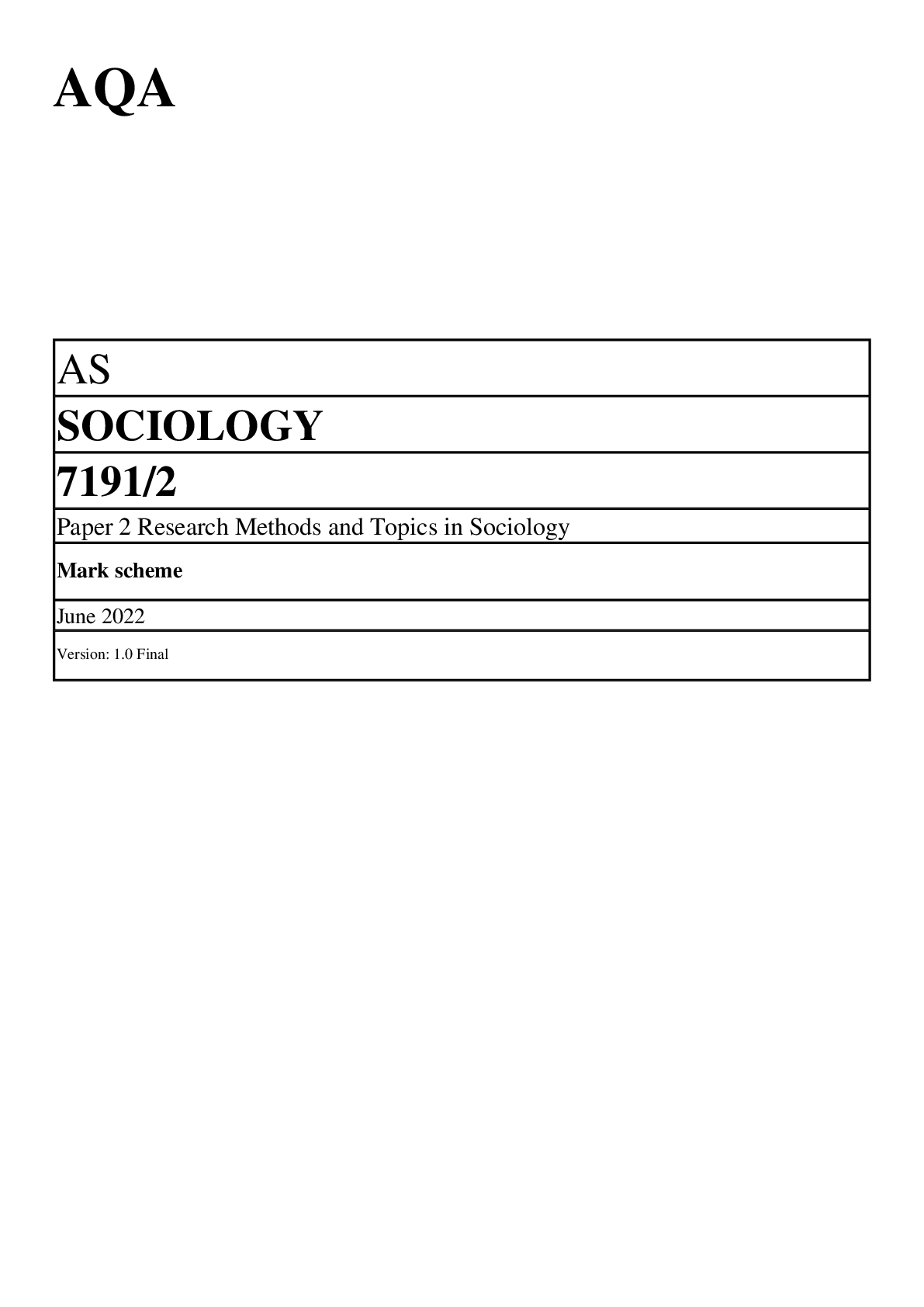
Buy this document to get the full access instantly
Instant Download Access after purchase
Buy NowInstant download
We Accept:

Reviews( 0 )
$17.00
Can't find what you want? Try our AI powered Search
Document information
Connected school, study & course
About the document
Uploaded On
May 22, 2023
Number of pages
25
Written in
All
Additional information
This document has been written for:
Uploaded
May 22, 2023
Downloads
0
Views
122

